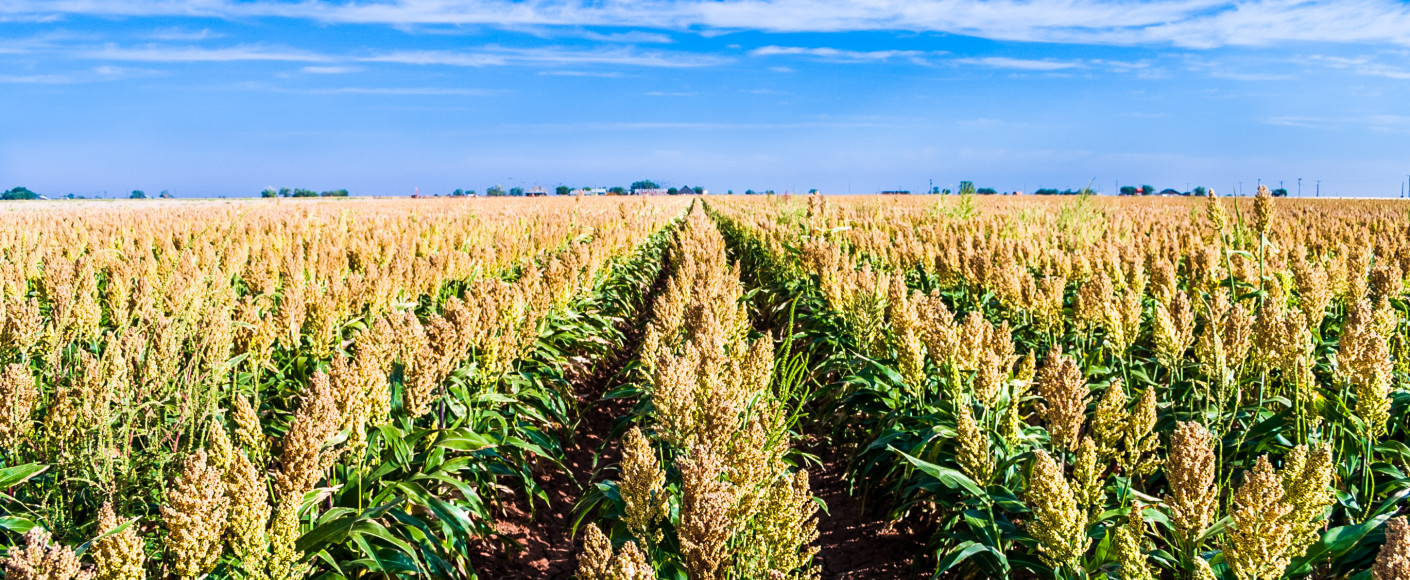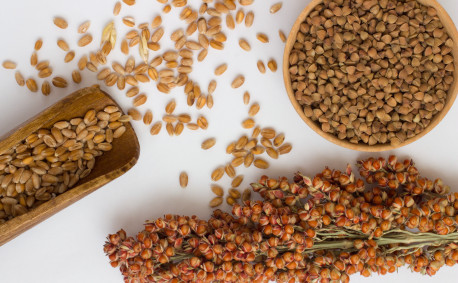Fun Facts About Sorghum Harvest
There’s nothing quite like fall in Kansas. The brutal heat of summer gives way to mild days and crisp evenings. The next crop of winter wheat is planted and field corn is freshly harvested. It can mean only one thing — we’re on the cusp of sorghum harvest.
Sorghum Planting and Growing
Naturally, harvest timing depends on when the crop is planted. Sorghum is typically planted in May or June — a few weeks after corn — once soil temperatures have warmed up and the moisture level is just right — not too wet from spring rains and not too dry from heat or drought. This timing ensures plants don’t flower during peak summer heat, while still giving them plenty of time to mature before the soil gets too cold.
As with many crops, farmers who grow grain sorghum have to take a variety of issues into account throughout the growing season:
- Soil nutrients
- Soil moisture
- Weeds and insects
- Plant disease
Farmers may use techniques like no-till, crop rotation and sequencing, or irrigation to help ensure good crop growth. They may also use fertilizers, herbicides or insecticides if need be to keep their plants healthy.
Sorghum Harvest
If everything goes well during growing season, farmers usually harvest their sorghum in September and October. They have to keep a close eye on their crops to ensure the plants have properly matured before harvesting them. Farmers specifically look at the level of moisture in the grain. As the plant reaches maturity, the kernels dry from top to bottom. Precise moisture levels are important because grains that are too moist will spoil while they’re in storage waiting to be processed and packaged. (They are also worth less money on the grain market.)
Farmers use a combine with a special header attachment to harvest sorghum. They have to be careful that the plant stalks don’t gum up the works of their machinery. Sorghum stalks naturally store a lot of sugar, which can be sticky when cut and harm the combine. Excess sugar can also increase the moisture level of the dried grain.
From timing to technique, sorghum harvest takes knowledge and skill to get the best possible crop harvested each year.
Fun Facts About Sorghum in Kansas
Kansas is the top producer of grain sorghum in the U.S. Our hot, dry summers and rich soil make Kansas an ideal spot for growing this hearty grain. Here’s some more sorghum trivia:
- Grain sorghum is also called milo.
- Kansas produces about half of the sorghum grown in the U.S.
- In 2019, Kansas farmers produced 204 million bushels of sorghum. One bushel weighs 56 pounds.
- Sorghum is used to produce many products, including ethanol, packing materials and livestock feed.
- One-third of grain sorghum grown in the U.S. is used for livestock feed.
- Sorghum is also a delicious, nutritious, gluten-free grain people can enjoy.
- It only takes six inches of water (total from soil, rainfall and/or irrigation) to produce the first bushel of grain sorghum.
Grain sorghum grown in Kansas is also exported to countries around the world. About one-third of sorghum grown in the U.S. is exported. This hearty crop doesn’t just feed Kansans and their cattle, it helps fuel the world!





